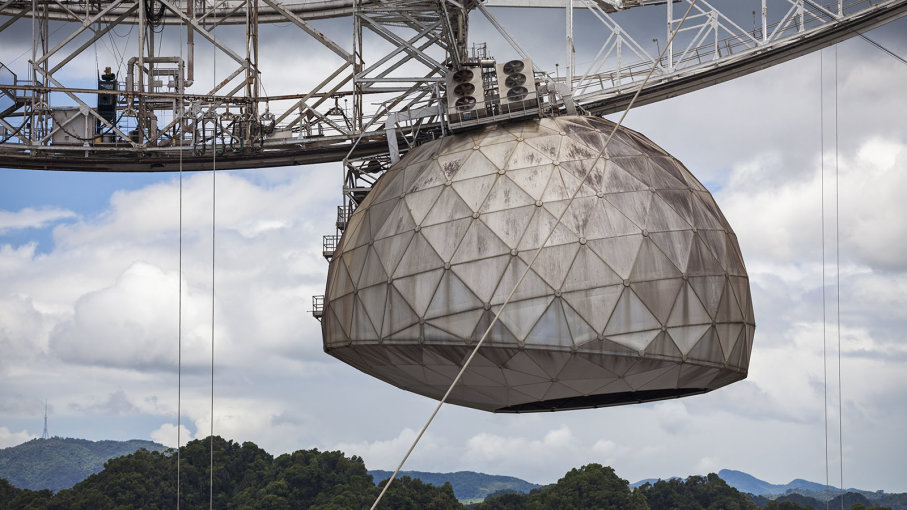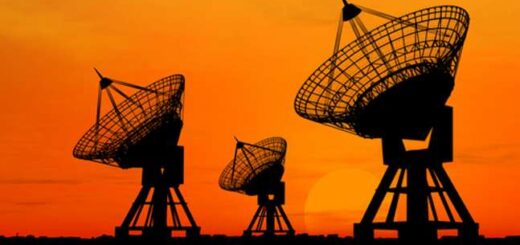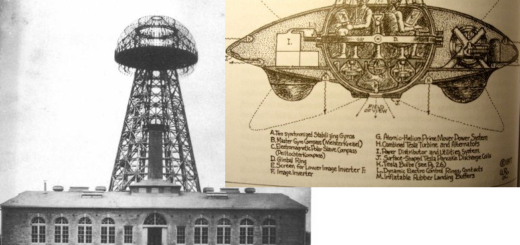Has the ‘Twisted’ Mystery of Fast Radio Bursts Been Solved?

Puerto Rico’s Arecibo Observatory (pictured) first nailed down the fast radio burst repeater FRB121102 in 2016. No small feat. UNIVERSAL IMAGES GROUP VIA GETTY IMAGES
Our universe is flashing with random blasts of radio waves and, until now, their origin has been a complete mystery.
Called fast radio bursts, or FRBs, these apparently random flashes in the sky were detected in 2007 when radio astronomers pored over historic data recorded a few years earlier. These pulses appear in different parts of the sky, and they seem to be happening all the time. The problem has been that FRBs haven’t repeated in the same location, making follow-up observations nigh impossible.
That was until 2016, when the famous Arecibo Observatory in Puerto Rico found the FRB equivalent of the holy grail: an FRB repeater. This eruption, called FRB121102, was emanating from a galaxy 3 billion light-years away, and now that astronomers have been able to study its repeating flashes, they think they know its origin.
“FRB121102 was found to repeat and is the only known FRB source to do so,” said astronomer Andrew Seymour, of Universities Space Research Association (USRA) at Arecibo Observatory, in a statement. “Even then, no pattern to the bursts have been identified, unlike with other radio phenomena, such as pulsars.”
According to astronomers, to produce an FRB, more than 100 million times the energy produced by the sun over an entire day would be needed to produce a radio burst reaching Earth from that distance. Very few energetic phenomena in the cosmos can perform such a herculean feat.
In a study published in the journal Nature and described by researchers this week at the 231st Meeting of the American Astronomical Society (AAS) in Washington, D.C., astronomers carried out a campaign to observe the FRB121102 repeater at higher frequencies using Arecibo and the Green Bank Telescope in West Virginia.
“We developed a new observing setup at the Arecibo Observatory to do this, and our colleagues at the Green Bank Telescope confirmed the results with observations at even higher radio frequencies,” said Seymour. “What’s more, one of the bursts we detected lasted less than 30 microseconds. Such a short duration argues that the bursts originated from a neutron star in an extreme environment of magnetized plasma.”
By observing at higher frequencies, the researchers were able to make detailed observations of the radio bursts’ polarization and found that the radio waves were being “twisted” — through a mechanism known as Faraday rotation — by the extreme magnetic environment they were produced in. This “unprecedented” twisting could mean that FRB121102 is being generated close to a supermassive black hole in the core of its host galaxy. Another possibility includes the extreme magnetism surrounding a special kind of neutron star.
“We estimate the magnetic field and gas density surrounding the blast source, and we can link them, for example, with a model involving a young magnetar — a neutron star with an especially large magnetic field — to the central engine that produces the bursts,” added James Cordes, George Feldstein Professor of Astronomy at Cornell University, in a different statement.
It is worth noting, however, that astronomers aren’t sure how FRBs are generated, but they are well on their way to understanding their source, a huge step forward in solving one of the biggest mysteries of the universe.



 Creators of mankind
Creators of mankind Description of “Tall white aliens”
Description of “Tall white aliens” Where they came from?
Where they came from? About hostile civilizations
About hostile civilizations The war for the Earth
The war for the Earth “Tall white aliens” about eternal life
“Tall white aliens” about eternal life Video: “Nordic aliens”
Video: “Nordic aliens” Aliens
Aliens Alien encounters
Alien encounters The aliens base
The aliens base UFO
UFO Technology UFO
Technology UFO Underground civilization
Underground civilization Ancient alien artifacts
Ancient alien artifacts Military and UFO
Military and UFO Mysteries and hypotheses
Mysteries and hypotheses Scientific facts
Scientific facts


















